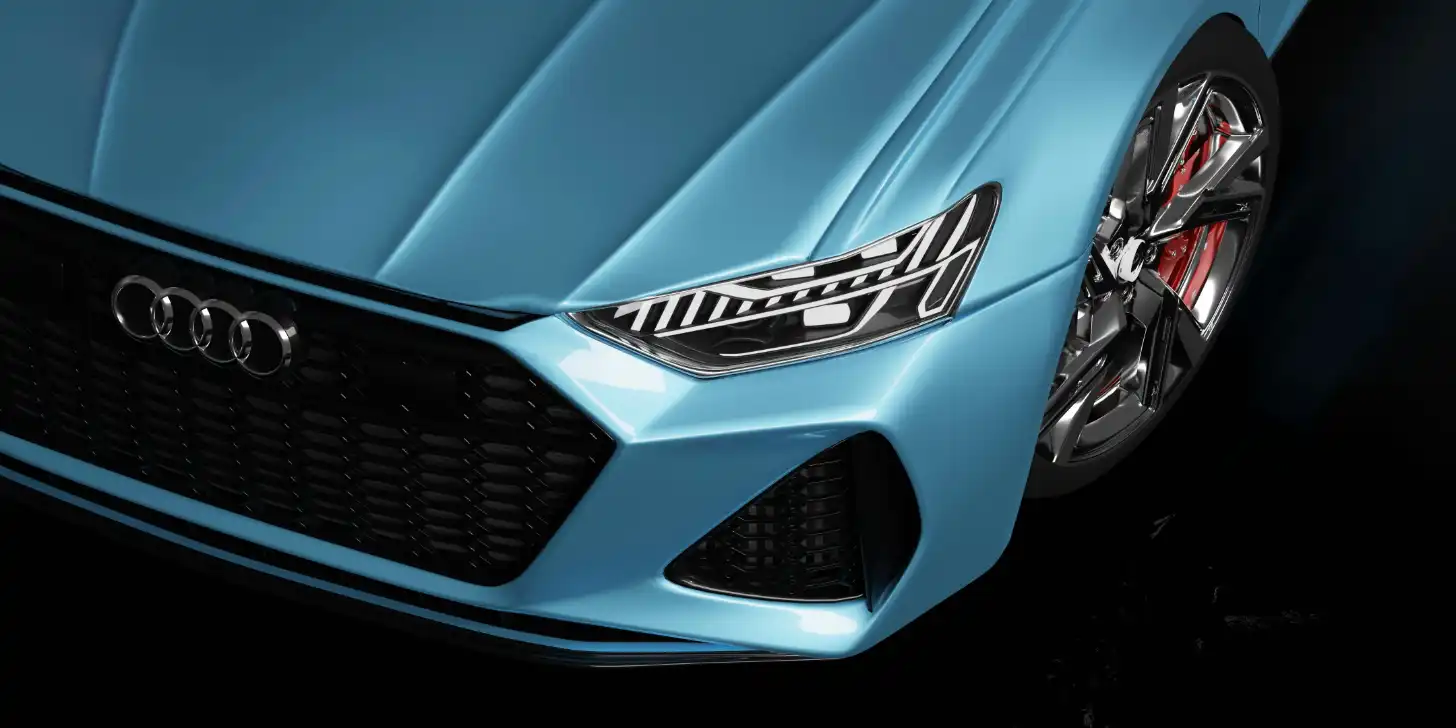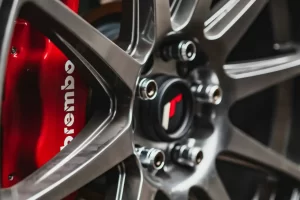A strong online presence is essential for auto detailing businesses to thrive. This extensive guide provides 20 vital tips to choosing a web designer for your auto detailing company. From evaluating industry experience to ensuring ongoing support, these tips will empower you to make an informed decision and create a website that attracts customers and drives business growth.
Key Takeaways
- Prioritize web designers with automotive industry experience
- Evaluate portfolios, client testimonials, and communication skills
- Focus on user experience, mobile optimization, and SEO capabilities
- Consider technical skills, customization options, and scalability
- Ensure ongoing support and maintenance options are available
Introduction

As an auto detailing business owner, you understand the importance of making a great first impression. In the digital world, your website is often the first point of contact between your business and potential customers. Choosing the right web designer is critical to creating an online presence that reflects the quality of your services and attracts new clients.
Let’s talk about the 20 essential tips that will guide you through the process of selecting the ideal web designer for your auto detailing business.
1. Look for Automotive Industry Experience
When searching for a web designer, prioritize those with experience in the automotive sector. A designer familiar with the auto detailing industry will better understand your business needs and can create a website that effectively showcases your services.
“Industry-specific experience can make a world of difference in creating a website that truly speaks to your target audience.” – Justin House, Web Design Expert
2. Review Their Portfolio
Examine the designer’s previous work to get a sense of their style and capabilities. Look for websites that are visually appealing, user-friendly, and relevant to the automotive industry. Pay attention to elements like layout, color schemes, and how services are presented.
3. Check Client Testimonials and References
Don’t hesitate to ask for client references or look for reviews on Google. Feedback from past clients, especially those in the automotive industry, can provide valuable insights into the designer’s reliability, professionalism, and ability to meet deadlines.
4. Assess Their Communication Skills
Effective communication is key to a successful web design project. Choose a designer who listens to your ideas, explains concepts clearly, and responds promptly to your questions or concerns.
5. Consider Their Pricing Structure
While cost shouldn’t be the only factor, it’s important to choose a web designer whose rates align with your budget. Be wary of prices that seem too low (cheap is often expensive), as they may indicate subpar work or hidden fees. Request detailed quotes and ensure you understand what’s included in the pricing.
6. Evaluate Their Design Process
A professional web designer should have a well-defined process for creating websites. Ask about their approach to planning, designing, and launching a site. A structured process indicates professionalism and can help ensure a smooth project from concept to creation.
7. Prioritize User Experience (UX) Expertise

Your website should be intuitive and easy for potential customers to navigate. Look for a designer who emphasizes user experience and can create a site that guides visitors effortlessly to the information they need about your auto detailing services.
8. Ensure Mobile Optimization
With more people using smartphones to search for local services, your website must be mobile-friendly. Choose a designer who specializes in responsive design, ensuring your site looks great and functions well on all devices.
9. Look for SEO Knowledge
Search engine optimization (SEO) is crucial for helping potential customers find your auto detailing business online. Select a designer who understands SEO best practices and can implement them in your site’s structure, content, and metadata.
10. Assess Technical Skills
Your auto detailing website may require specific features like appointment booking systems, before-and-after galleries, or service package comparisons. Make certain your chosen designer has the technical skills to implement these functionalities seamlessly.
11. Consider Content Management Capabilities
You’ll want to update your website content regularly with new services, promotions, or blog posts. Choose a designer who specializes in an easy-to-use content management system, such as WordPress, that allows you to make updates without extensive technical knowledge.
12. Look for Marketing Integration
Your website should integrate smoothly with your other marketing efforts. Opt for a designer who can incorporate features like email newsletter sign-ups, social media links, and Google Analytics to support your broader marketing strategy.
13. Evaluate Hosting and Maintenance Options

Ask potential designers about their recommendations for website hosting and whether they offer ongoing maintenance services. Having a reliable hosting solution and regular maintenance can ensure your site remains secure and performs well over time.
14. Check for Security Measures
Website security is crucial for protecting your business and customer data. Ensure your chosen designer implements robust security measures, such as SSL certificates and secure payment gateways, if you plan to accept online bookings or payments.
15. Consider Scalability
As your auto detailing business grows, your website needs may evolve. Choose a designer who can create a scalable website that can easily accommodate new services, locations, or features in the future without requiring a complete redesign.
16. Assess Their Creativity
While functionality is important, you also want a website that stands out from your competitors. Look for a designer who can bring creative ideas to the table while still meeting your business needs and industry standards.
17. Look for Customization Options
Avoid designers who rely too heavily on templates. Your auto detailing business is unique, and your website should reflect that. Choose a designer who offers custom design options to create a site that truly represents your brand and services.
18. Prioritize Load Time Optimization
A slow-loading website can frustrate potential customers and negatively impact your search engine rankings. Ensure your chosen designer prioritizes site speed and can optimize images, code, and other elements for quick loading times.
19. Check for Accessibility Compliance
Your website should be accessible to all users, including those with disabilities. Choose a designer who understands and implements web accessibility guidelines, ensuring your site can be used by the widest possible audience.
20. Evaluate Post-Launch Support
Your relationship with your web designer shouldn’t end when your site goes live. Look for a designer who offers post-launch support and can help with any issues that arise after your site is up and running. This ongoing support can be invaluable as you grow your online presence.
Key Factors to Consider When Choosing a Web Designer
| Factor | Importance | Why It Matters |
|---|---|---|
| Industry Experience | High | Ensures understanding of auto detailing business needs |
| Portfolio Quality | High | Demonstrates designer’s capabilities and style |
| Client Testimonials | Medium | Provides insights into designer’s reliability and work quality |
| Communication Skills | High | Facilitates smooth collaboration throughout the project |
| Pricing Structure | Medium | Ensures project fits within your budget |
| Design Process | Medium | Indicates professionalism and organization |
| User Experience Focus | High | Results in a website that’s easy for customers to use |
| Mobile Optimization | High | Ensures site works well on all devices |
| SEO Knowledge | High | Helps your site rank higher in search results |
| Technical Skills | High | Enables implementation of necessary features |
| Content Management | Medium | Allows for easy updates and maintenance |
| Marketing Integration | Medium | Supports broader marketing efforts |
| Hosting and Maintenance | Medium | Ensures ongoing site performance and security |
| Security Measures | High | Protects your business and customer data |
| Scalability | Medium | Allows for future growth and expansion |
| Creativity | Medium | Helps your site stand out from competitors |
| Customization Options | High | Creates a unique site that reflects your brand |
| Load Time Optimization | High | Improves user experience and SEO |
| Accessibility Compliance | Medium | Ensures your site is usable by all visitors |
| Post-Launch Support | High | Provides ongoing assistance and troubleshooting |
Conclusion

Choosing the right web designer is a critical decision that can significantly impact your auto detailing business’s online success. By considering these 20 crucial tips, you can find a designer who not only creates a visually appealing website, but also one that effectively attracts customers, showcases your services, and supports your business goals.
Remember to prioritize industry experience, user experience, mobile optimization, SEO capabilities, and ongoing support. With the right web designer, you can create a powerful online presence that sets your auto detailing business apart from the competition and drives growth.
Frequently Asked Questions
How much should I budget for a professional auto detailing website?
The cost of a professional website can vary widely depending on your specific needs and the designer’s experience. For a small to medium-sized auto detailing business, you might expect to invest anywhere from $2,500 to $15,000 for a custom-designed website. More complex sites with advanced features, like online booking systems or e-commerce capabilities, may cost more.
How long does it typically take to design and launch an auto detailing website?
The timeline for designing and launching a website can vary depending on the complexity of the project and the designer’s workload. On average, you can expect the process to take anywhere from 8 to 16 weeks (4 to 6 weeks with Grounded Group). This includes time for initial consultations, planning, design, development, content creation, testing, and revisions. A simple website might be completed more quickly, while a more complex site with custom features could take longer. Clear communication and prompt feedback from your end can help keep the project on schedule.
Should I provide all the content for my website, or can the web designer help with that?
While you’re the expert on your auto detailing business, many web designers offer content creation services or can recommend copywriters who specialize in creating web content for the automotive industry. It’s often beneficial to collaborate on content creation, with you providing key information about your services and unique selling points, and the designer or copywriter crafting it into engaging web content. Some designers include basic content creation in their packages, while others might charge extra for this service. Discuss content needs early in the process to ensure a clear understanding of responsibilities.
How important is Search Engine Optimization (SEO) for my auto detailing website?
SEO is crucial for any local service business, including auto detailing. A well-optimized website can help your business appear in search results when potential customers in your area are looking for auto detailing services. This increased visibility can lead to more website traffic and, ultimately, more customers. While you don’t need to be an SEO expert yourself, choosing a web designer who understands SEO best practices can give your site a strong foundation. They should be able to implement proper site structure, optimize page titles and meta descriptions, ensure fast loading times, and create SEO-friendly content.
What ongoing maintenance will my auto detailing website need after it’s launched?
After your website is launched, it will require ongoing maintenance to keep it secure, up-to-date, and performing well. This typically includes:
- Regular software updates (for the content management system and any plugins)
- Security checks and implementation of security patches
- Regular backups of your website data
- Occasional content updates (like adding new services or updating pricing)
- Performance monitoring and optimization
- Updating SSL certificates
Some designers offer maintenance packages, while others may provide training so you can handle basic updates yourself. It’s important to discuss maintenance needs and options with your chosen designer before the project begins to ensure your website remains in top condition long after its launch.







